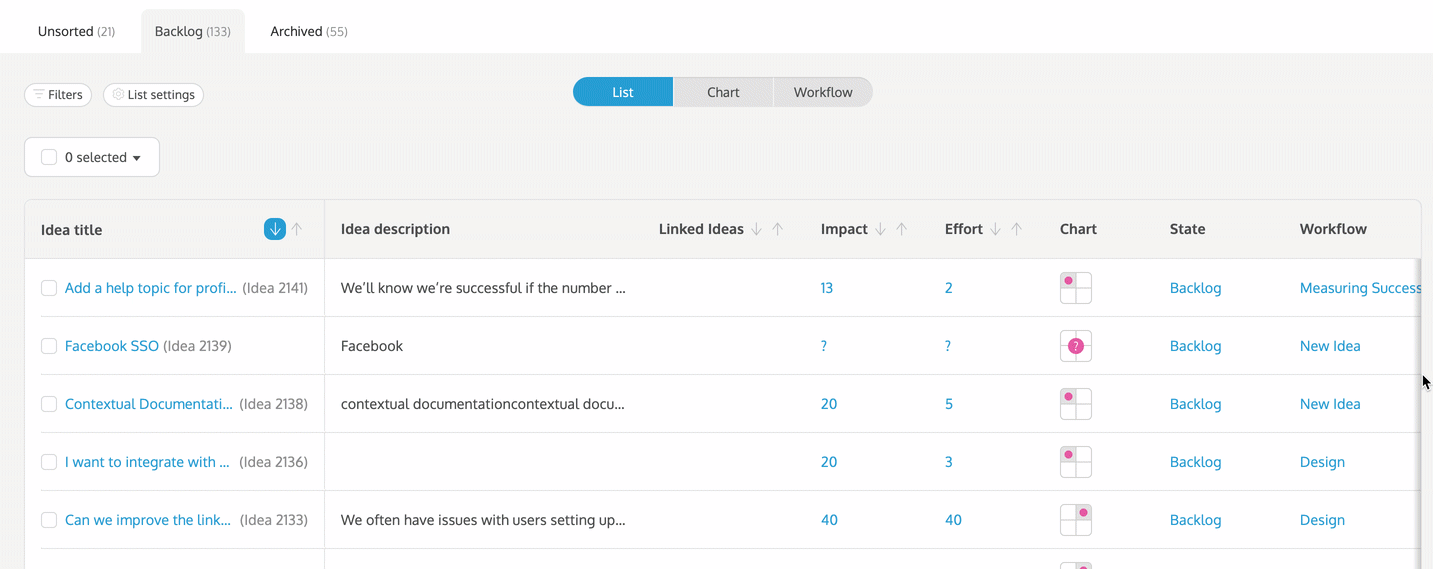Should Product Managers Say No?
I came across this question in an online product management community I’m part of. Product management is a tough gig – especially when, daily, you have to communicate with multiple teams and everyone thinks their idea is the best solution for making your product better. With stakeholder demands, sales and marketing teams wanting launch dates, as well as your developers coming back to you with more barriers, on the surface at least, I don’t blame product managers for saying ‘no’.
But despite the hair pulling, the thinking that product managers should say ‘no’ to ideas goes against the grain. A product manager should have the skill set to listen and prioritize ideas that they think will work to solve customer problems. So instead of saying ‘no’, product managers should be focused on saying ‘yes’ to those things that will help make a positive difference, and learn more about the ideas they’re not sure about.
Saying No Might Damage Your Product Culture
The product team stretches across an entire organization and is very influential. Product managers saying ‘no’ can ultimately have a pretty negative impact on a product and all those involved. This approach inherently teaches the rest of the company that you’re the source of rejecting ideas and suggestions and will have a detrimental impact on your ability to collaborate, manage stakeholders, and engagement with your co-workers. By rejecting ideas or ways of thinking you isolate yourself and your product work. You can forget about those all-important collaborative processes within your company, your customer-facing teams will shy away from you when sharing insights, and your stakeholders will become further removed from your strategy – perhaps even overruling you on large strategic decisions.
Product Managers Should Learn About the Problems, Instead of Saying ‘No’
So what do you do instead of saying no? Easy, focus on how you can say ‘yes’ to the right things:
- Open up your product process to everyone. Teach everyone what it takes to get an idea from ‘new’ to development. This could involve a product tool like ProdPad which increases visibility over your product development process.
- On that same path, show everyone what validation looks like. How do you know that working on something will bring success, and how do you measure that success?
- Have ongoing roadmap sharing sessions. If your team doesn’t understand what problems you are solving and why, it creates more internal friction. When you say yes to things, show why this is.
Boris Krstovic, Senior Product Manager at home goods marketplace Wayfair, also commented on this post about product managers saying ‘no’. His comment really resonated with me and links to what I’m talking about now:
“Saying ‘no’ is the default for product managers. But the thing is that in 95% of these cases it shouldn’t sound like a “no”. What they need to hear you say isn’t ‘no’ – it’s more along the lines of ‘hey, let’s learn more about it’, ‘let’s cross that bridge when we get there’, ‘how do we support the claim this moves the needle on our objectives the most’, and bajillion of other things.”
When you get a request or someone submits a new idea (no matter how swamped you are) you don’t need to write it off straight away. What might now seem like a bad idea, might not be such a bad idea further down the line – when there are loads of new customer problems that need to be solved. Take the idea and keep it safe in your product backlog, let it be nurtured, worked on, and give it more airtime when you think it might be ready.

How Should Product Managers Say ‘No’, if They Have To?
The world will never be perfect, even without a global pandemic, so there are a few times when a product manager might need to say ‘no.’ Boris Krstovic sums it up brilliantly:
“Personally, I very rarely say ‘no’. I usually deflect the conflict if there’s a slight chance of deflecting it – 90% of battles aren’t worth battling anyhow, and will just fade away when they find a new shiny object. Of course, a need to have someone back you up when you say ‘no’ is highly dependent on your organization’s culture, and I’ve seen it vary from a very honest and direct communication style (no backup or anything), all the way to extremely political and GoT-ish [Game of Thrones] level 99 corporate diplomacy games.”
Boris Krstovic follows three simple steps which mean he only has to directly say ‘no’ a couple of times a quarter:
- Make sure you fully understand the other party and their goals. Perhaps your fight isn’t with the one you need to say “no” to, but with their bosses.
- Always consult with your manager before directly saying no, and inform the team, too. This does not mean escalate, it should be a discussion.
- Immediately de-escalate. Keep communication unaggressive and try to sympathize with their need, and potentially offer something that would soothe it.
Try To Refrain From Saying ‘No’
Product managers see the bigger picture. It’s our job to communicate what and why things get prioritized, and how the problems we choose to solve benefit both our customers and our business decisions. Simply saying ‘no’ to things adds friction to team communication. If you’re looking to improve company transparency and make sure everyone is aligned on solving the same problems then try out our product management tool, ProdPad. Explore our free Sandbox to get a feel for how it will help you become a positive, customer-focused product manager.
